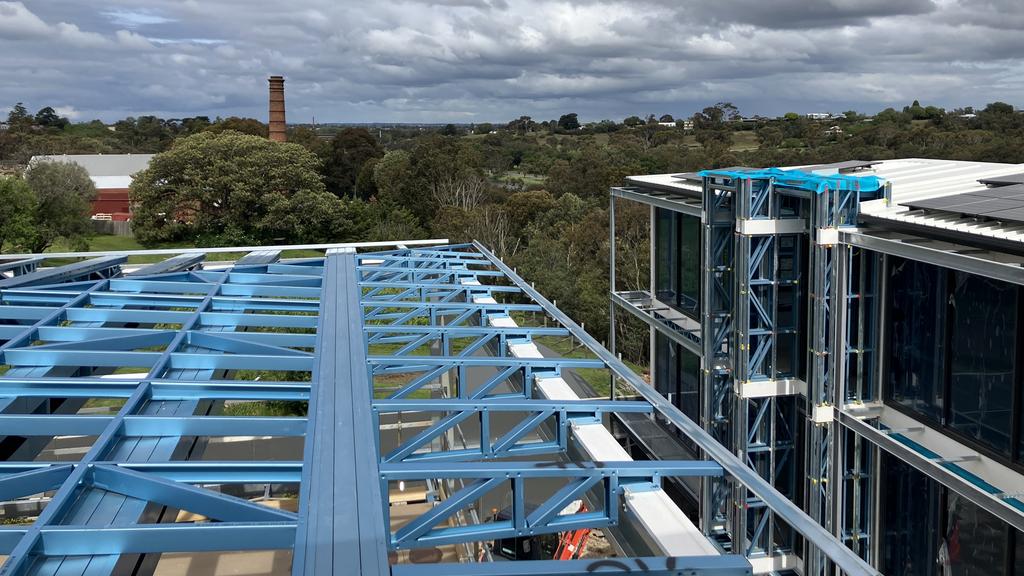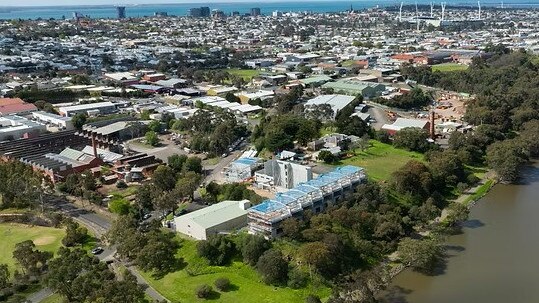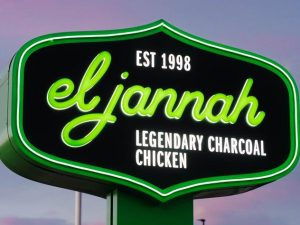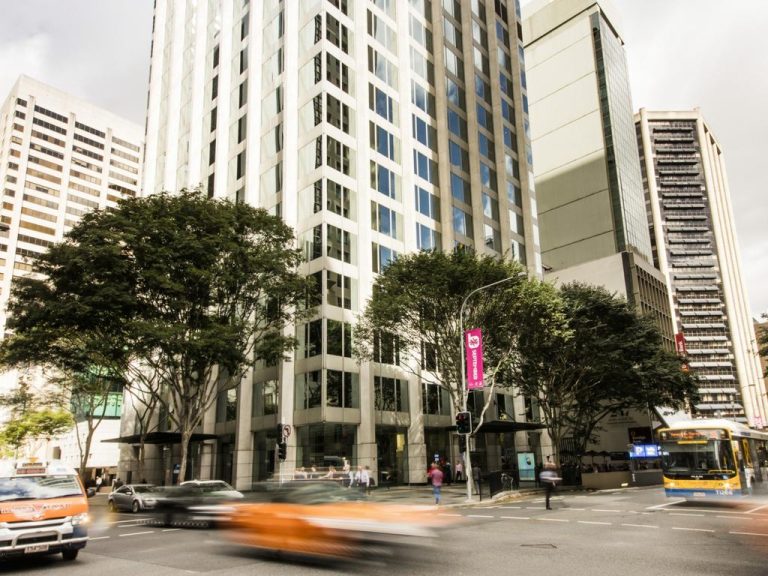Geelong mayor pleads for tax breaks to kickstart city projects

Ireland Brown Projects’ Tom McKay, IDS director Phil Petch and Geelong mayor Stretch Kontelj celebrate the Barwon Business Park construction “topping out”.
More than 300 construction jobs – more than two-thirds for locals – and thousands of tonnes of concrete and steel are some of the key numbers going in to a commercial project under construction in Newtown.
But that’s small compared to what mayor Stretch Kontelj would like to see if the raft of permits approved in Geelong’s central business district are activated.
Builder Ireland Brown Projects, developer IDS Developments and clients marked another stage for the Barwon Business Park, where the highest beam has been placed in the Riversdale Rd construction overlooking the Barwon River.
RELATED: MasterChef-tenanted coastal hub served up for sale
New boom regions: Where to buy now before prices explode
Liquidators list former Socceroo’s family firm site
But Mr Kontelj used the occasion to reflect on the lack of commercial building activity especially across Geelong’s CBD, where the state government has lauded the approval of permits for major projects, but few have been activated.
“Geelong is one of the fastest-growing regions of Australia, and as mayor you may have heard me, and my message is, ‘build, baby build’,” Mr Kontelj said.
“We want to see more of this type of creative, clever development around the city, and this project certainly fits that bill.”
Suburban office-style projects, such as Barwon Business Park, and the Federal Mills precinct in North Geelong, are emblematic of the problems of building in the CBD, where the developers say the economics are challenging.
“With both sides of politics, what I’m wanting to advocate in the lead up to the state election is a special economic zone around the Geelong area,” Mr Kontelj said.

Views from the top floor at Barwon Business Park development under construction at Newtown shows the vista available over Barwon River parkland.

Views from the top floor at Barwon Business Park development under construction at Newtown shows the vista available over Barwon River parkland.
“What I’d like to see is three levels of government foregoing taxes, rates and charges for a period of up to five years – council foregoing rates, state government foregoing land tax.
“What we’re doing is foregoing that to ensure that these projects are economically viable, because it’s no cheaper to build in Geelong (than in Melbourne).
“In fact it’s probably more expensive given the way we are competing with a lot of Big Build projects it’s hard to get the trades and so on.
“We need the permits that are ultimately issued to be able to flourish.”
Melbourne legal firm Arnold Thomas and Becker is one of the few active private projects in the CBD office space, having gutted the seven-storey Victoria House building in Moorabool St as part of a redevelopment.
The Barwon Business Park creates a pair of three and four-storey strata office buildings and a separate cafe building, which has attracted
Accountancy firm M-Group is the largest occupant, taking the entire fourth floor combining three original units within the complex.

At artist’s render of Barwon Business Park.

The project is emerging on the north bank of the Barwon River.
Gartland Projects director Michael De Stefano said four strata units remained available in the complex.
The development overlooks the river, Balyang Sanctuary and the golf course and the EP Robinson wool processing plant – the last of Geelong’s wool scourers – who’s impending closure is being met with excitement from developers keen to activate the West Fyans St precinct, expanding mixed use zoning throughout the old industrial landscape to encourage regeneration of the area.
IDS director Phil Petch said the development was designed to bring the surrounding environment in.
“Each week we can see this being achieved and the finished result is better than the marketing material, which as a developer is not often the case,” Mr Petch said.
Ireland Brown Projects’ Tom McKay said 70 per cent of the workforce is local.
“We’ve had 320 workers inducted to date, we’ve done 35,000 hours,” he said.
“We’ve also poured 500 cubic metres of concrete in the foundations. We have 200 tonnes of steel throughout these buildings. We’ve had 300 concrete precast panels as well. So just to give that topping out.”
The project is due for completion by mid 2026.







